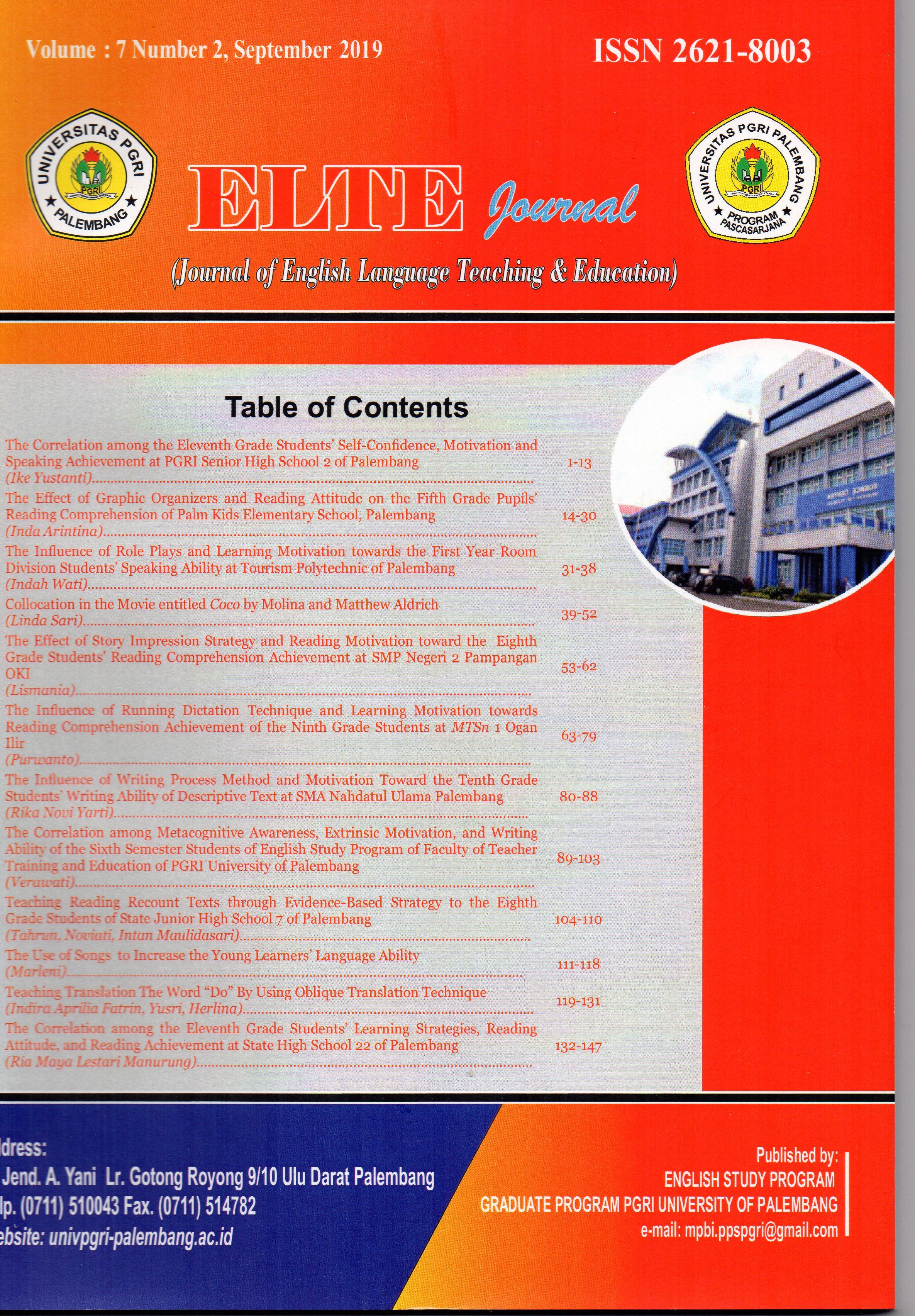THE USE OF SONGS TO INCREASE THE YOUNG LEARNERS’ LANGUAGE ABILITY
DOI:
https://doi.org/10.31851/elte.v7i2.3570Abstract
Abstract
Most young learners with physical impairments can benefit from listening to music because doing so helps with concentration andor influences their movements. Smooth music will result in movements with a flow, while fast dance music may cause jerky movements.In the early grades, transitions are a little harder to set because the students are still learning what the concept of a minute is and what one feels like. A song can improve transitions because it becomes a behavior cue: Students grow accustomed to the length of the song or part of a song and internalize the time they have to move on to the next task, which helps them begin to take responsibility for their own learning.Songs play an important role in the development of young children learning a foreign language. A testament to this is the frequency with which songs are used in English Language teaching classrooms all over the world. In particular, it will discuss how songs can help learners improve their listening skills and pronunciation, and how they can be useful in the teaching of vocabulary and sentence structures. It will also discuss how songs can reflect culture and increase students’ overall enjoyment of learning a foreign language. Finally, the paper aims to explore how songs for children can be adapted to suit a particular theme or part of the curriculum a teacher might wish to teach. Most children enjoy singing songs, and they can often be a welcome.
Keywords: Language, English, songs, effective and young learners.
Downloads
Published
Issue
Section
License

ELTE JOURNAL oleh http://www.univpgri-palembang.ac.id/e_jurnal/index.php/elte disebarluaskan di bawah Lisensi Creative Commons Atribusi-BerbagiSerupa 4.0 Internasional.




.png)

.jpg)
.png)

